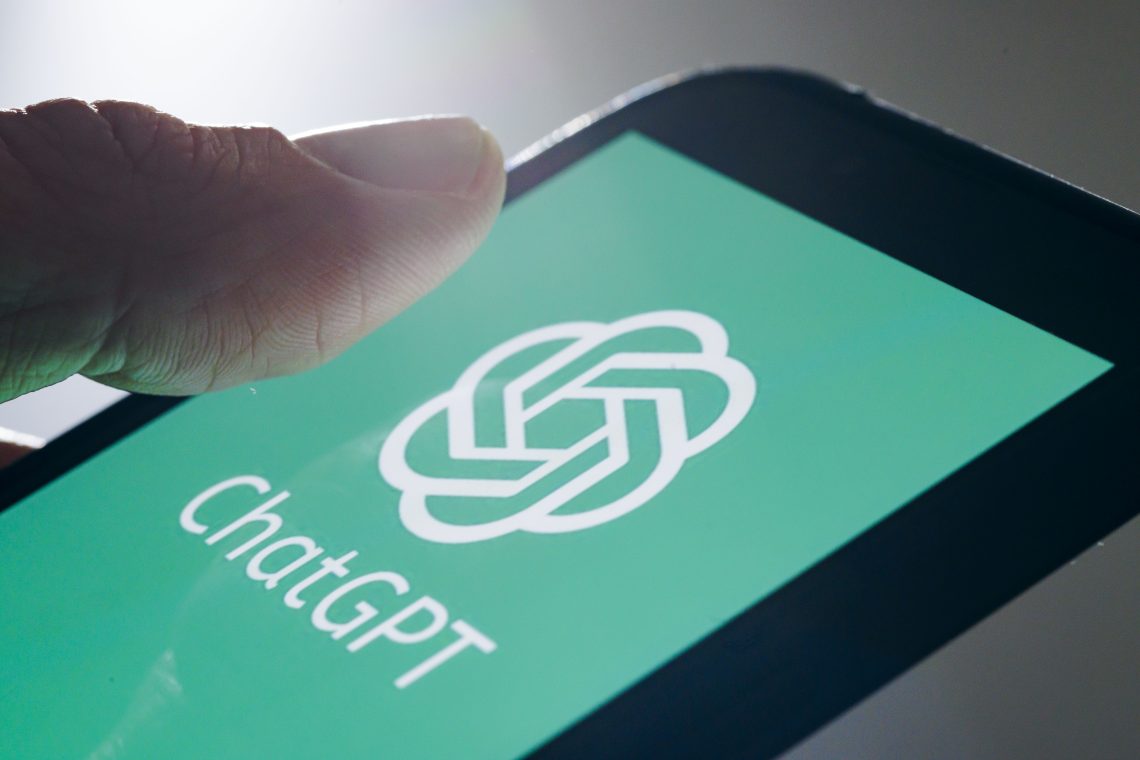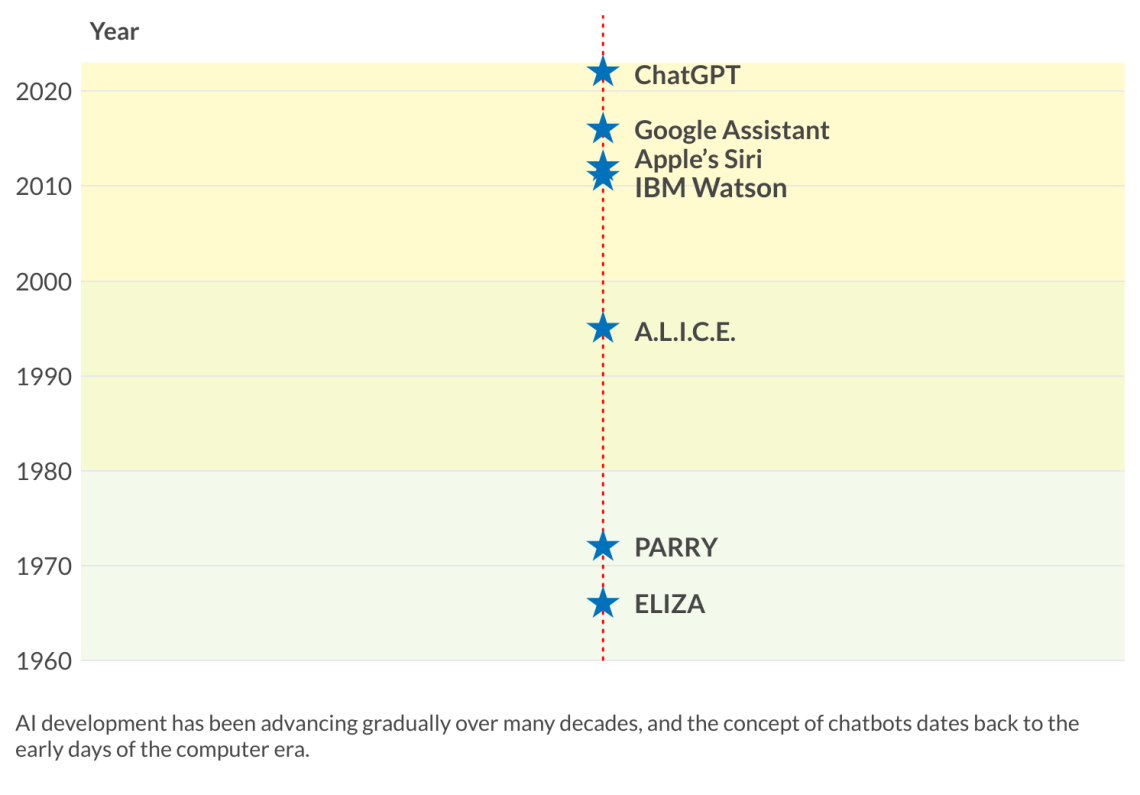The value proposition of AI chatbots
Intelligent chatbots such as ChatGPT redefine labor division, creating value in various industries, but face limitations that may affect adoption.

In a nutshell
- Chatbots have the potential to make work easier
- Several limitations, including output quality, remain a concern
- Their potential depends on how they are adopted
Within the first five days of launching in December 2022, ChatGPT reportedly gained its first million users, outperforming competitors like Google’s Bard. As more people adopt or experiment with these chatbots, economists and investors are increasingly curious about their value proposition.
To assess their value, one must first differentiate between regular chatbots and “intelligent” chatbots like ChatGPT. Although there is no clear cutoff between the two, it is helpful to consider them as having different maturity levels and therefore different value propositions.
Traditional chatbots are programmed to address a wide yet ultimately limited range of queries. They are often used in customer service to provide information, respond to simple requests, and distinguish between standard and complex queries.
“Intelligent” chatbots like ChatGPT have the ability to learn. Rather than adhering to standard chatbot behavior, they study patterns from human interactions, using this information to expand and improve the services they provide.
To better understand the maturity differences between chatbots, it is worth taking a close look at ChatGPT as an example of an “intelligent” bot. Its primary feature is using natural languages for both input and output, making it more accessible for average consumers.
ChatGPT is an artificial intelligence (AI) system developed by San Francisco-based AI research laboratory OpenAI. It utilizes generative pre-training (GPT), which uses natural languages by combining autonomous machine learning with pre-training on extensive connected text passages.
Since its inception in 2018, GPT has undergone several upgrades. ChatGPT is based on the third generation of the technology, where unsupervised machine learning takes place. The algorithm learns from untagged data, mimics the patterns it encounters and generates new content based on this learning curve.
GPT-3 programming enables ChatGPT to converse with humans using natural language. The bot operates with the same input and output as an average human conversation. It can answer various questions, and its responses not only improve but continue to get better as the bot is trained on human interaction. In essence, ChatGPT creates its own content.
Facts & figures
How can AI applications create value?
The most obvious benefit of AI applications is the improved quality of conversation between humans and these programs. The utterances of “intelligent” bots like ChatGPT are less awkward and cumbersome than traditional bots. However, this is not enough to create value on its own. Additional uses for ChatGPT and similar bots include:
Coding: ChatGPT is trained in formal languages, allowing it to be used for coding. As it is also trained in natural languages, it can develop new programs, apps, games and even music. The intersection of formal and natural language is increasingly important in a digital economy relying on networks and the Internet of Things.
Creating: “intelligent” bots can generate text for speeches, articles or even poetry. Users can specify the subject, length and target audience for the text. The bot then uses information from the internet and its own learning to produce a result, creating meaningful content for humans.
Division of labor: ChatGPT’s content creation abilities make it well suited to complement human labor. It can research information, systematically organize it and tailor the output to the user’s needs. This enhances the division of labor between humans, who provide input and control the output quality, and the bot, which processes content.
However, there are limitations to ChatGPT and similar AI-based bots. They are not entirely new, since similar programming has been used in translation services for at least the past five years. Their value proposition lies in the quality and breadth of their uses, rather than innovation.
There are also serious concerns about output quality. As the bot learns more, it discerns more general patterns, using these to generate content at the cost of individuation. ChatGPT creates similar outputs for different queries when they fall into the same pattern.
The algorithm combines information and processing to create content, but it is unclear if it checks the credibility of the information. Based on what it produces, it does not appear to critically assess arguments and lines of thought. Due to machine learning’s multilayered nature, the bot cannot explain all its sources or how it resolved discrepancies during content generation. Users also have to keep in mind that disclosing information makes it public, since their inputs can be fed into the bot’s learning system. And there are other issues, such as the lack of personalization or the excess wokeism in ChatGPT’s free version.
More by Henrique Schneider
Cryptocurrencies: The sages and the charlatans
Climate barriers to global trade
Microchips subsidies: Protectionism, not security
Scenarios
Most likely, GPT development and adoption will continue incrementally. AI will improve at handling images and animations as input and output. Bot usage will increase but likely be employed within limited areas, such as translation, customer service, prototyping and pre-underwriting. The division of labor between humans and bots will improve, and the technology will make work easier by taking on the less rewarding tasks.
In one scenario, chatbots permeate almost all interactions and even substitute some human-to-human exchanges permanently. To achieve such a dispersion, ChatGPT would need to use all natural interactions – not only language, but also images, animations, human-to-human contact and nonlanguage behavior patterns as inputs and outputs. Chatbots could serve as supporting elements in nearly all human-to-human interactions, such as studying, working and deciding where to go on holiday. They would replace teachers, psychologists, marketers, or investment bankers. The probability of such a scenario is low, perhaps less than 15 percent.
In another scenario, chatbots like ChatGPT do not spread beyond any market applications other than their current niche. They could even fail if the aforementioned limitations are not addressed in future development. If the programs continues producing similar, interchangeable outcomes, they would lose value for individual users seeking personalization. Moreover, if their learning mechanism remains opaque or becomes even less transparent, their legitimacy would be questioned. Lastly, the lack of privacy for users could seriously hinder business adoption. The likelihood of this worst-case scenario is around 20 percent.
Whether “intelligent” chatbots will unlock their full value potential depends on how they will be adopted by individuals and in businesses. And this will hinge on how programmers develop more advanced AI. Special attention will need to be paid to parameters such as information protection, individualization and more accessible and intelligible output.
The excitement about ChatGPT might wear off, but the value proposition of “intelligent” chatbots will remain – within reasonable limits.










